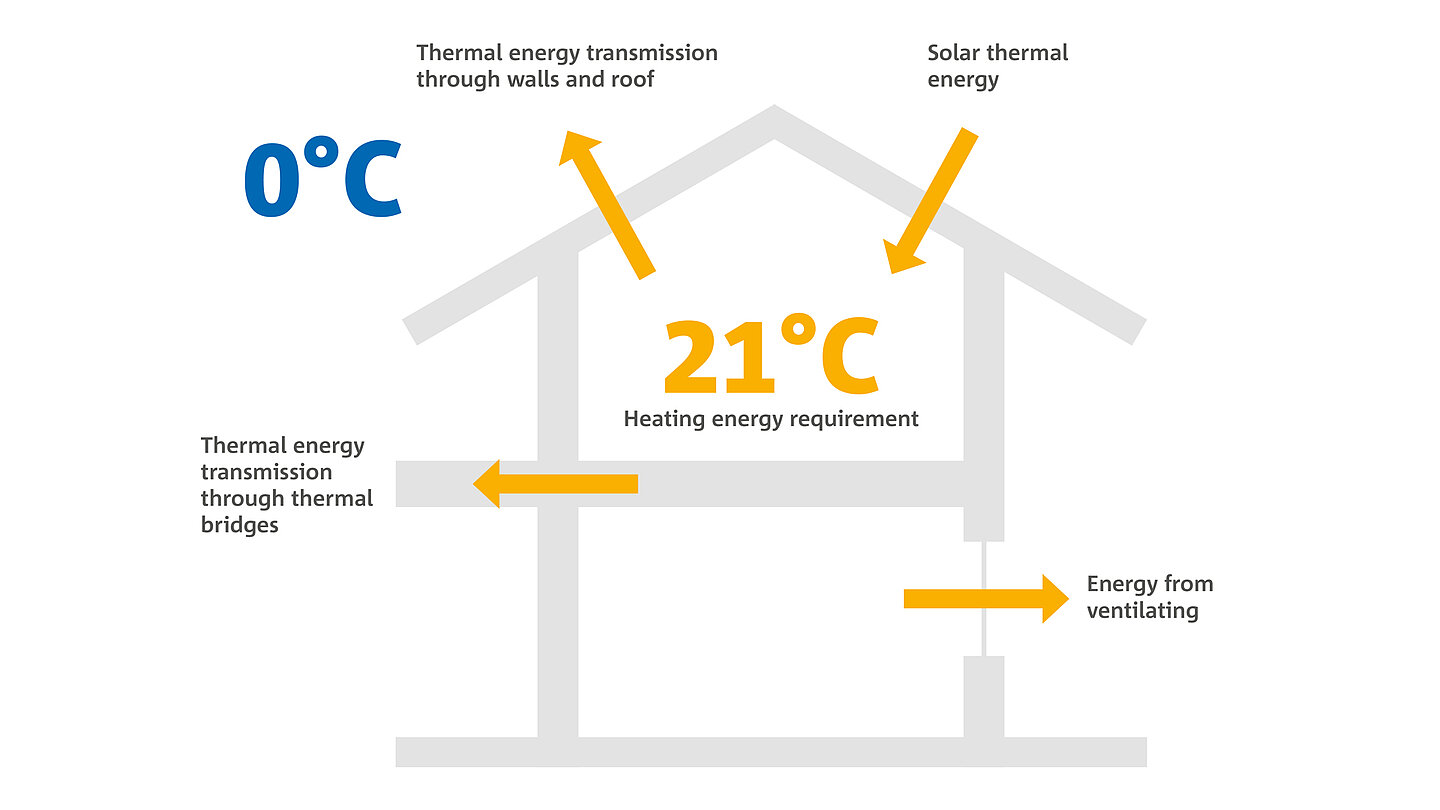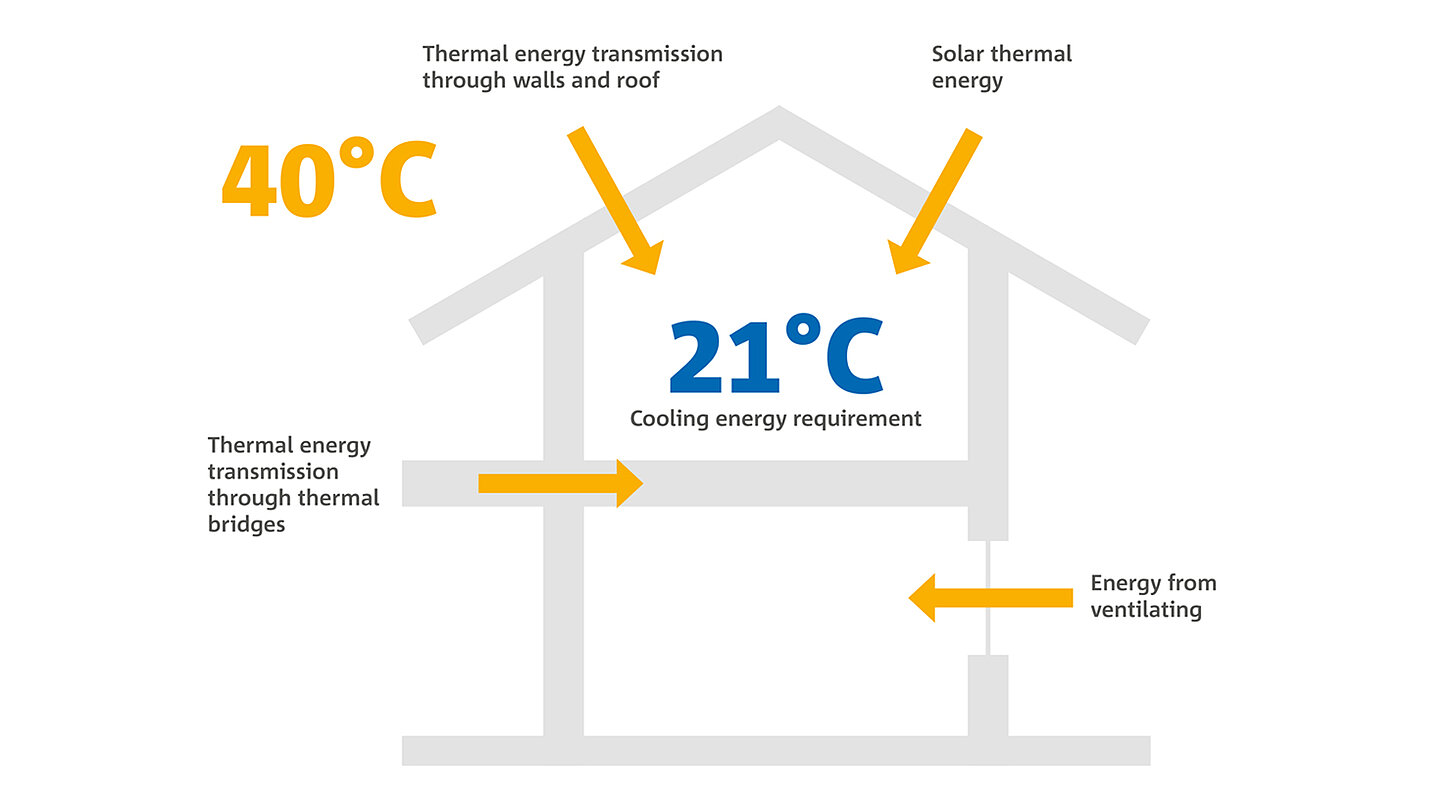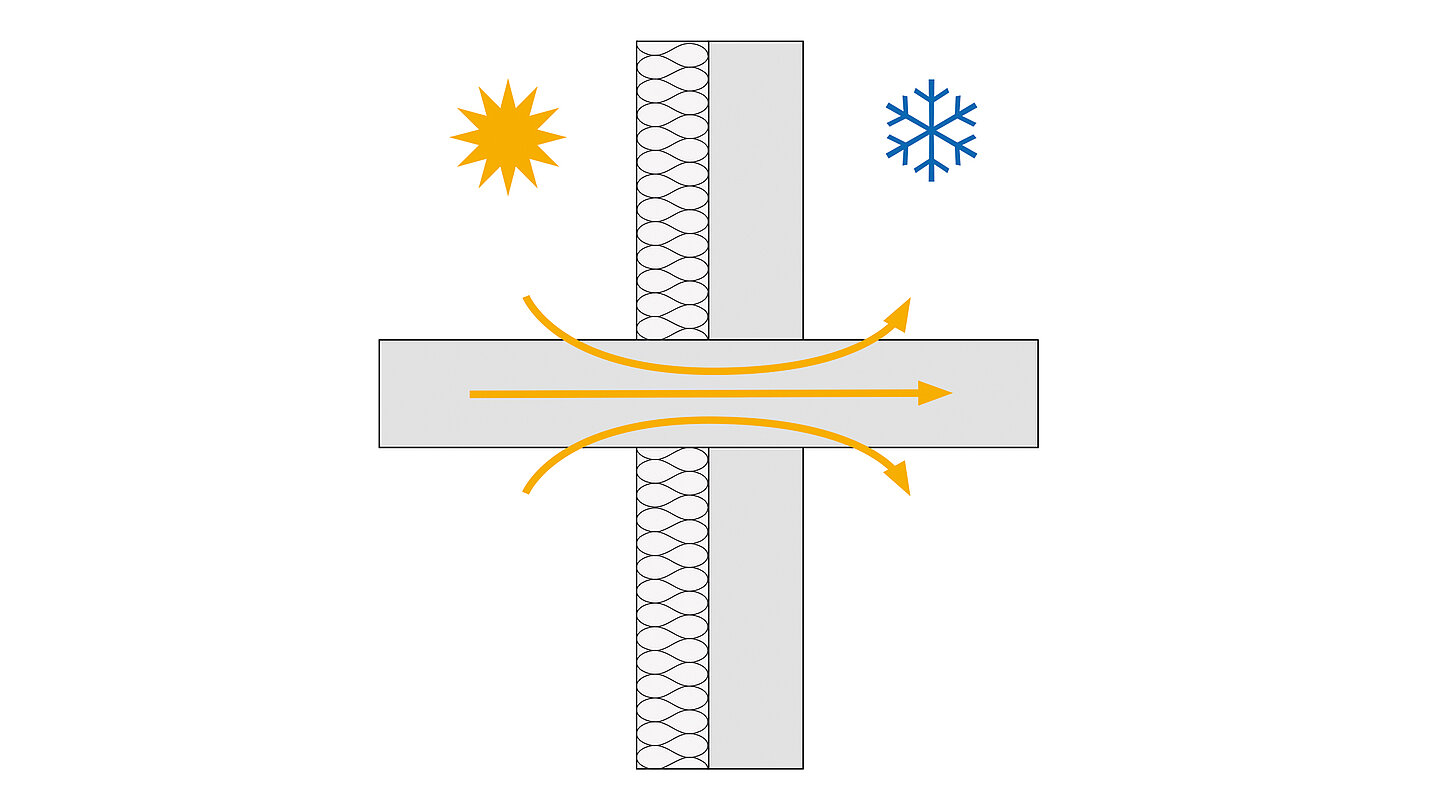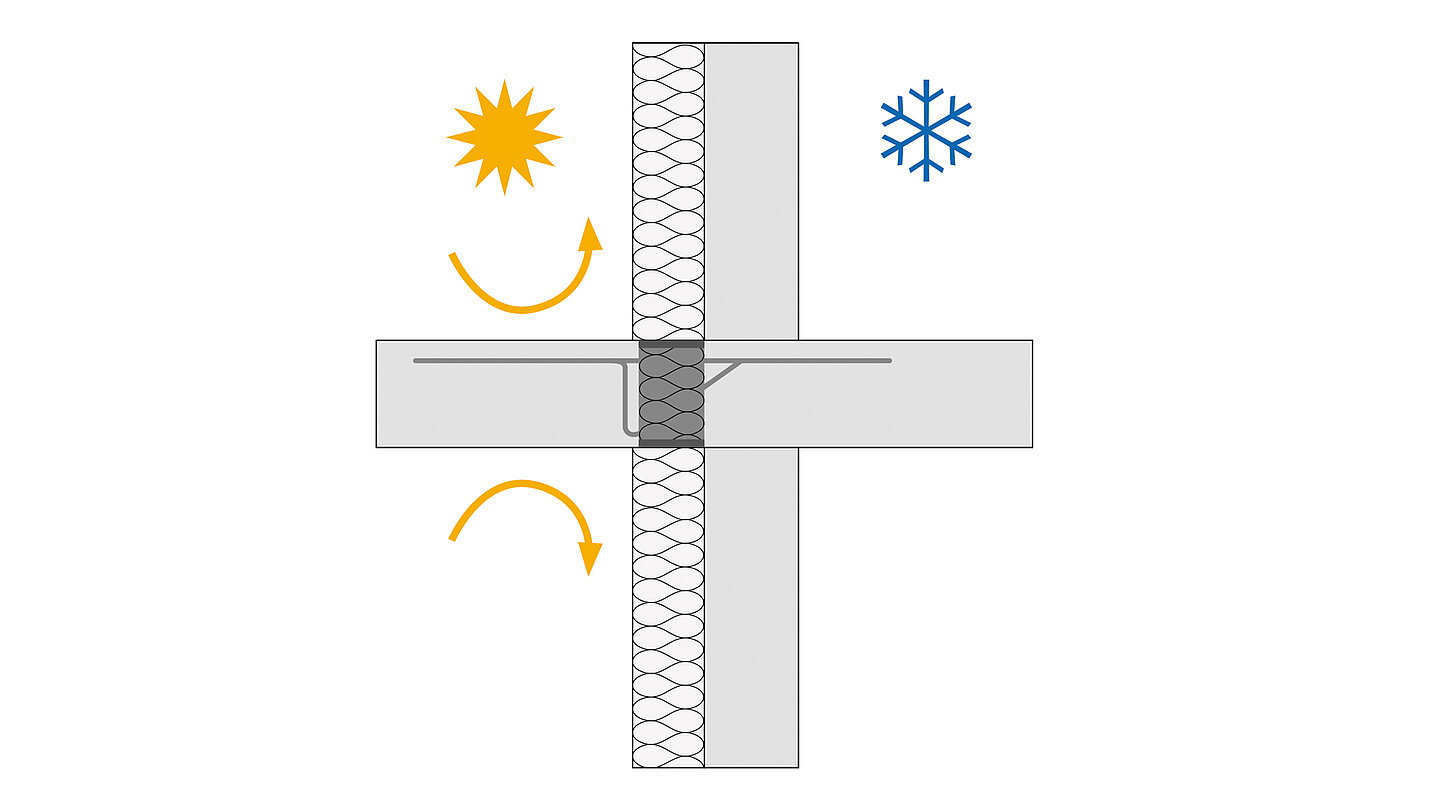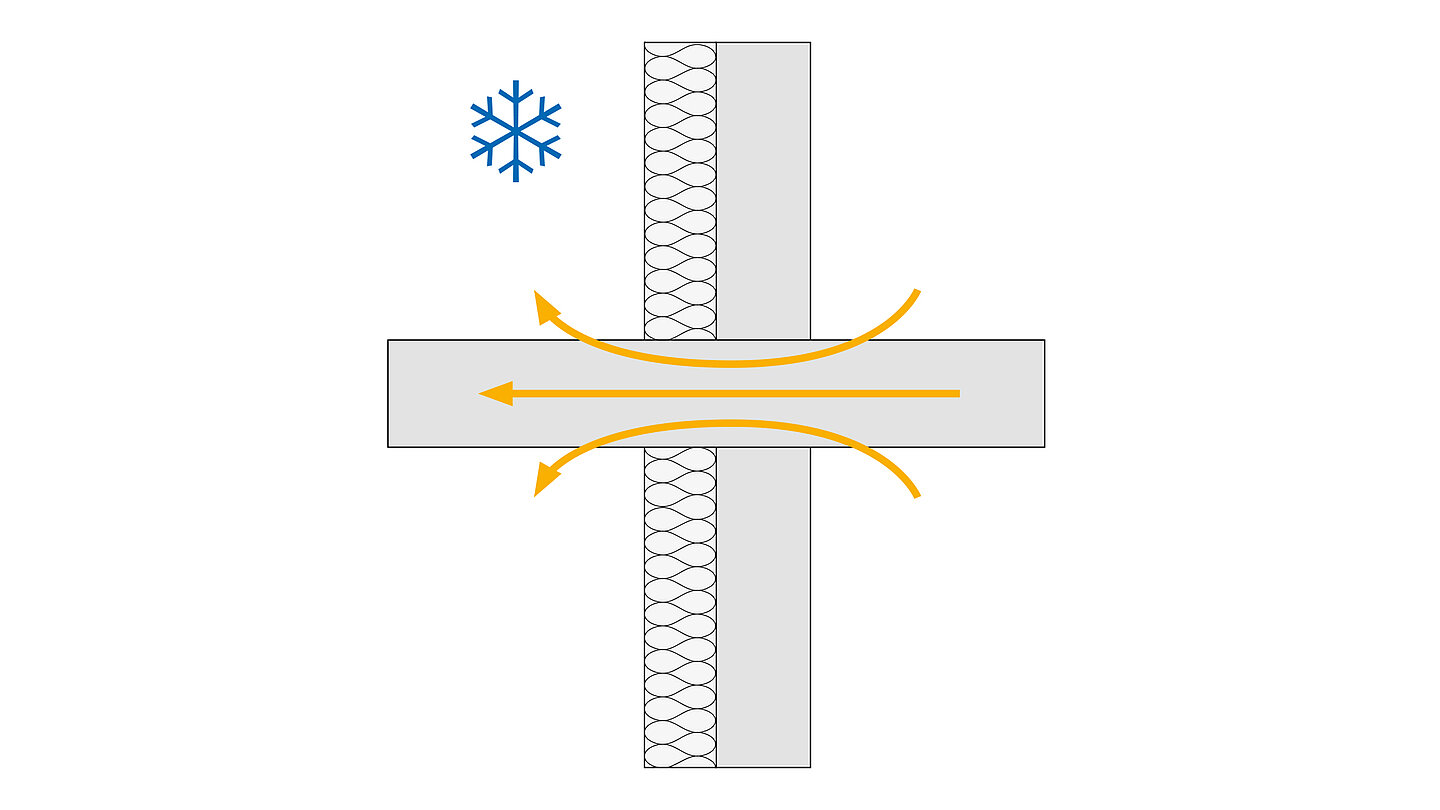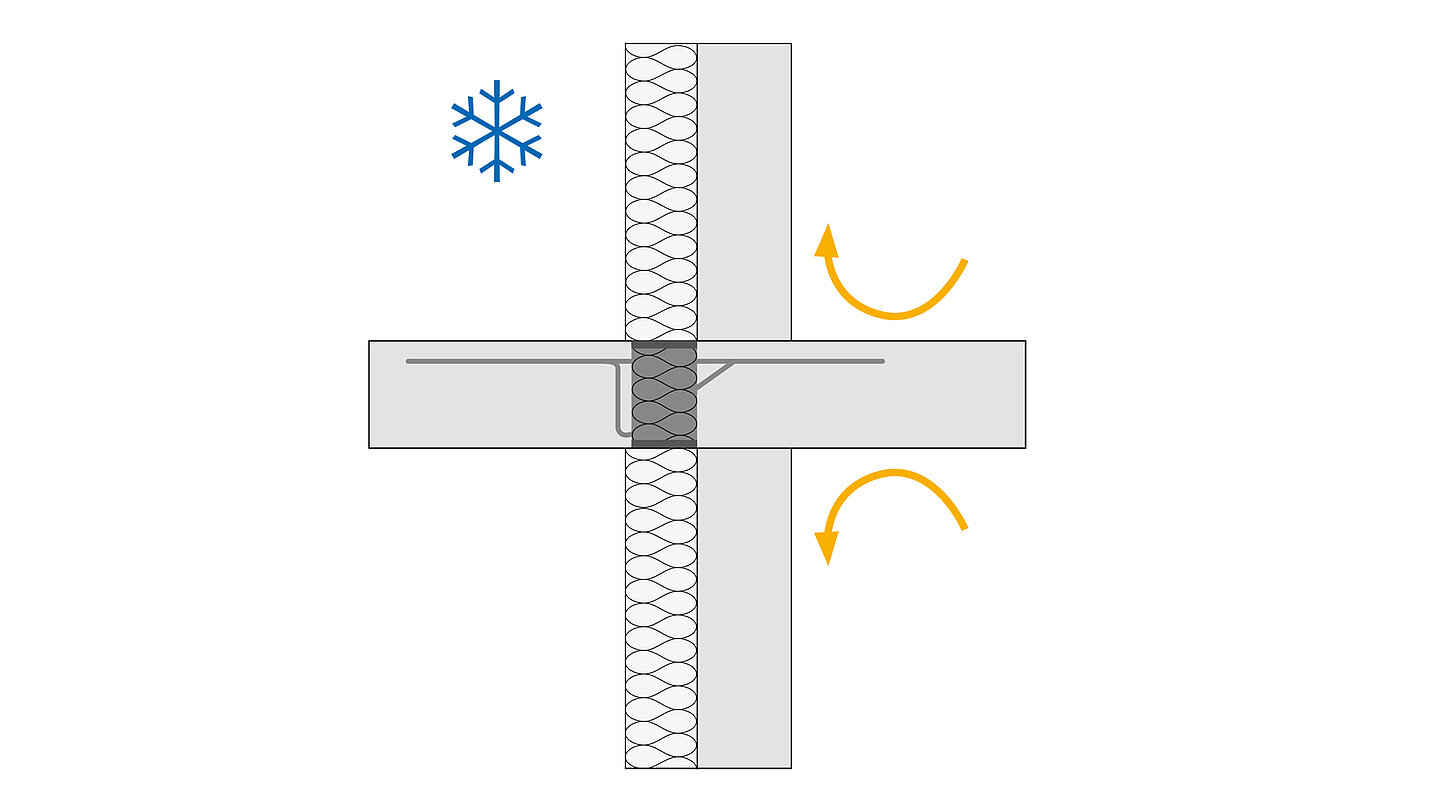Different situations. One solution.
Thermal break efficiency where you need it most.
The Schöck Isokorb® thermally separates cantilevered components, reducing heat transmission from the inside to the outside. In this function, the load-bearing thermal insulation element has long been well-known among architects and planners. In warm and hot climates the function is reversed.
read more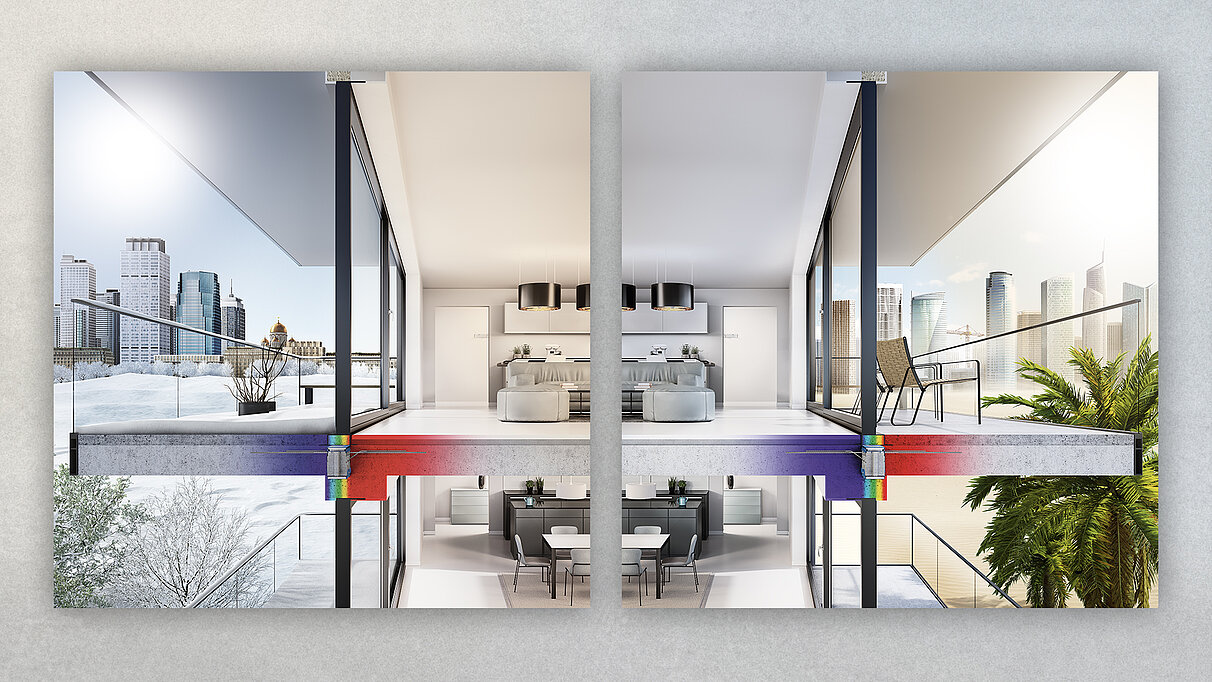
The energy flows occurring in a building can be summarized as follows: Some energy is transmitted from or to the outside, and the HVAC system balances those flows in order to keep a comfortable temperature inside. Those flows come mainly from the transmission through walls and roof, the direct solar radiation, the ventilation and from the thermal bridges. The importance of thermal bridges rises when the general level of insulation is improved, and they represent up to a third of the whole energy flows in our modern buildings.
A thermal bridge is a local spot in the building where heat is dissipated significantly more quickly than in other areas. Typically, thermal bridges can be found where elements such as balconies or canopies penetrate the building envelope. The thermal flow is particularly high if those components – balconies or canopies and floor slabs – are made of a material such as concrete or masonry with high thermal conductivity or where large steel cross-sections are required for component connection for static load-bearing reasons.
The Isokorb® has been used for several decades in regions where temperatures are significantly higher or lower than the internal temperature of the building to avoid this thermal flow, as well as the issues it creates: thermal discomfort, low perceived quality, energy losses, condensation and mold growth, deterioration of structural parts.
In warm regions, sun radiation warms up the external components, and this energy is transmitted inside through the thermal bridge, where the air-conditioning system needs to take this energy out of the building. The Isokorb® avoids the heat getting in.
In cold regions, the heating system warms up the room and internal components, and a part of this energy is transmitted outside through the thermal bridge. The Isokorb® avoids the heat getting out.
The Isokorb® helps reducing the energy bill, makes buildings more durable, and allows to install lighter and cheaper HVAC systems.
